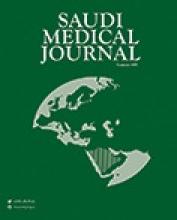Abstract
OBJECTIVE: To examine the laminin specific receptor, known as beta1 integrin, and fibronectin distributions in 13, 15, 17, and 20 days prenatally old and 2 and 6 days postnatally old murine lung tissue by immunohistochemical methods at light microscope level.
METHODS: Male and female swiss albino mice were used for experimental procedures from July 2001 to March 2002 at Gazi University Faculty of Medicine. The study was conducted on samples of 13, 15, 17, and 20 prenatally old and 2 and 6 days postnatally old lung tissues. Indirect immunohistochemical methods and fibronectin and laminin beta1 integrin antibodies were used; tissues were examined with a light microscope.
RESULTS: In the prenatal group, fibronectin immunoreactivity was determined to be irregular in bronchiole epithelium cells, while it was strongly evident in mesenchymal cells and vascular endothelial cells. Laminin beta1 integrin immunoreactivity was also observed irregularly. Development period of lungs, immunoreactivity of fibronectin was clearly identified in the bronchiolus, ductus alveolaris and alveolar epithelial cells, mesenchymal cells, and vascular endothelial cells, and laminin immunoreactivity was strongly involved both in the apical and basal membranes of all the epithelial cells and within the basal lamina. The decreased immunoreactivity of fibronectin and laminin beta1 integrin was established after birth on the fetal period.
CONCLUSION: In this study we concluded: 1. During the development of the lung, fibronectin is necessary for the shaping of lung parenchyma and stroma. 2. beta1 integrin as the receptor of laminin is important in the process of lung maturation and the modelling of basal lamina.
- Copyright: © Saudi Medical Journal
This is an open-access article distributed under the terms of the Creative Commons Attribution-Noncommercial-Share Alike 3.0 Unported, which permits unrestricted use, distribution, and reproduction in any medium, provided the original work is properly cited.






